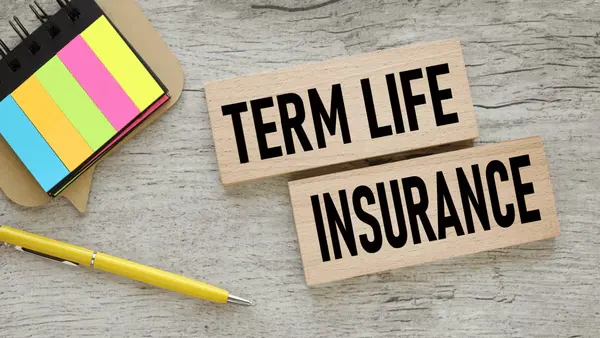
When it comes to protecting your family’s financial future, choosing between life insurance vs term insurance can feel overwhelming. Term insurance offers remarkably affordable coverage, with some plans providing a ₹1 crore life cover starting from just ₹478 per month, while maintaining an impressive 99.7% claim settlement rate.
What is term insurance exactly? As the name suggests, it provides pure risk protection for a specific period, offering substantial coverage at significantly lower premiums compared to comprehensive life insurance plans. Term vs life insurance represents a fundamental choice between two approaches: term insurance focuses exclusively on death benefits for a fixed duration, whereas life insurance combines protection with savings or investment benefits.
We understand that making this decision requires careful consideration of your financial goals, budget constraints, and family needs. In this expert guide, we’ll break down the key differences between these insurance types, helping you determine which option aligns best with your specific situation and long-term objectives.
What is Term Insurance vs Life Insurance?
Understanding the fundamental difference between term insurance and life insurance stands as the first step in making an informed decision for your family’s financial security. Let’s examine both options in detail.
Definition of Term Insurance: Pure risk cover for a fixed period
Term insurance represents the simplest form of life insurance, designed to provide pure protection for a specific timeframe. This insurance product focuses exclusively on offering a death benefit to your beneficiaries if you pass away during the policy term.
Essentially, term insurance serves as a financial safety net that pays a lump sum amount to your nominee in case of your unfortunate demise within the policy period. However, if you survive beyond the term period, the policy expires without providing any returns or maturity benefits.
What makes term insurance stand out is its affordability. Since it offers pure risk coverage without any investment component, the premium amounts remain significantly lower compared to other life insurance products. For instance, you can secure a life cover of up to ₹1 crore for a monthly premium as low as ₹402.
Term insurance policies typically offer coverage for fixed durations such as 5, 10, 15, 20, or 30 years, allowing you to choose a timeframe that aligns with your specific requirements.
Definition of Life Insurance: Coverage with savings or investment benefits

Life insurance, in its broader sense, encompasses various policy types that combine protection with wealth creation opportunities. Unlike term insurance, traditional life insurance policies offer both death benefits and maturity benefits.
The most common types of life insurance include whole life insurance, endowment plans, money-back policies, and unit-linked insurance plans (ULIPs). These policies not only provide a death benefit but also include a savings or investment component that allows policyholders to accumulate cash value over time.
Whole life insurance, for example, offers protection throughout your lifetime, generally until the age of 99 or 100 years. These plans provide dual benefits of investment and protection, with part of your premium being invested in financial instruments to build cash value over time.
Although life insurance premiums are typically higher than term insurance, these policies serve multiple purposes, including providing death benefits, accumulating cash value, and offering potential investment growth—features that can be beneficial for long-term financial planning.
How they differ in purpose and structure
The primary distinction between term insurance and life insurance lies in their fundamental purpose. Term insurance focuses solely on providing financial protection for a specified period, making it an ideal choice for those seeking pure risk coverage without additional costs.
In contrast, life insurance policies aim to fulfill the dual objective of protection and savings or investment. This structural difference manifests in several ways:
| Feature | Term Insurance | Life Insurance |
| Purpose | Pure risk protection | Protection plus savings/investment |
| Premium Cost | Lower premiums | Higher premiums |
| Coverage Duration | Fixed term (5-40 years) | Can extend to whole life (up to age 100) |
| Maturity Benefits | None (in basic plans) | Lump sum payment if policyholder survives |
| Cash Value | Does not build cash value | Accumulates cash value over time |
| Flexibility | Less flexible | More flexible with loan and withdrawal options |
Furthermore, with term insurance, the entire premium amount goes toward providing insurance coverage. In contrast, with life insurance plans, part of your premium is allocated for insurance coverage, and the remainder is invested to build cash value.
For young professionals or individuals with financial dependents, term insurance offers a cost-effective way to secure high coverage. On the other hand, those looking to combine protection with wealth creation might find traditional life insurance policies more suitable for their needs.
Understanding these fundamental differences allows you to align your insurance choice with your specific financial goals and protection needs.
Premiums, Coverage, and Maturity Benefits
The financial implications of choosing between term insurance and life insurance represent a critical factor in your decision-making process. Let’s examine how these two options differ in terms of cost structure, coverage periods, and benefits at maturity.
Premium Comparison: Low vs High Cost
The most striking difference between term insurance and life insurance lies in their premium structures. Term insurance plans typically offer significantly lower premiums compared to comprehensive life insurance policies. This price gap exists because, with term plans, the entire premium amount goes toward providing insurance coverage. Conversely, in life insurance plans, only a portion of your premium pays for coverage while the remainder gets invested in financial instruments.
For illustration, a 30-year-old seeking ₹1 crore coverage might pay just ₹818 per month for a term plan spanning 30 years. Meanwhile, a guaranteed endowment policy offering identical coverage could cost approximately ₹20,902 monthly. This substantial difference makes term insurance particularly attractive for those seeking maximum protection within budget constraints.
Additionally, term insurance premiums remain remarkably affordable when purchased early in life. As you age, both insurance types become more expensive, yet term plans consistently maintain their cost advantage.
Coverage Duration: Fixed Term vs Lifelong
Term insurance, as the name indicates, provides coverage for a predetermined period, commonly ranging from 5 to 35 years. You select the duration based on your specific requirements, typically aligning with major financial responsibilities like mortgage payments or children’s education.
Life insurance, specifically whole life plans, offers more flexible tenures and generally remains active until the policyholder reaches 100 years of age. This extended coverage ensures that beneficiaries receive a payout regardless of when the insured person passes away, provided premium payments remain current.
The choice between fixed-term and lifelong coverage ultimately depends on your age and financial objectives. Younger individuals often start with term insurance for its affordability, potentially converting to whole life coverage later.
Maturity Benefits: None vs Lump Sum Returns
Standard term insurance plans provide no maturity benefits. If the policyholder survives the policy term, no payouts are made, and the coverage simply expires. This fundamental characteristic explains why term insurance premiums remain so affordable—they focus exclusively on risk protection without wealth creation components.
In contrast, life insurance plans typically offer survival or maturity benefits—a lump sum amount paid to the policyholder upon surviving the policy term. This payment can serve as a retirement corpus or financial cushion for meeting long-term goals. Furthermore, certain life insurance policies build cash value over time, which policyholders can borrow against at favorable interest rates.
Return of Premium Option in Term Plans
Despite the general rule about term insurance lacking maturity benefits, a special category called Term Return of Premium (TROP) plans offers an exception worth considering. These innovative policies refund all premiums paid if the policyholder survives the policy term.
TROP plans essentially provide dual benefits: pure protection through death benefits plus the return of your financial investment upon policy maturity. Naturally, these plans command higher premiums than standard term insurance, yet still cost less than comprehensive life insurance policies.
For example, a 26-year-old paying an annual premium of ₹15,000 for 30 years with a ₹90 lakh sum assured would receive all premiums back upon policy maturity. This feature makes TROP plans appealing to those who want protection but are concerned about “losing” their premium payments if they outlive the policy term.
Risk Protection vs Wealth Creation
Beyond the basic structural differences, term insurance and life insurance serve fundamentally different financial purposes. Let’s examine the core philosophical distinction between these two approaches to financial protection.
Term Insurance: Focus on death benefit only
Term insurance functions as a pure risk protection tool, designed with a single purpose in mind—providing financial security to your family in your absence. With term plans, 100% of your premium goes toward securing the death benefit, making it a focused financial protection instrument.
Term insurance is considered “pure risk cover” primarily because it concentrates exclusively on mitigating the financial risks associated with untimely death, without any additional investment features. This singular focus explains why term insurance remains remarkably affordable compared to other insurance options.
As a pure protection plan, term insurance addresses a specific concern: ensuring your family doesn’t face financial hardship if you pass away during your prime earning years. The policy pays out a death benefit if you die from natural causes, health-related problems, accidents, or even during natural calamities, providing comprehensive protection against life’s uncertainties.
Life Insurance: Combines protection with savings
In contrast, life insurance operates on a dual-benefit model that merges protection with wealth accumulation. A portion of your premium goes toward life coverage, while the remainder builds cash value over time. This cash value component grows steadily, offering a savings mechanism within your insurance policy.
The cash value in permanent life insurance policies accumulates tax-deferred and can be accessed through various means during your lifetime. You may withdraw funds, take policy loans without credit checks, or use the accumulated value to cover future premium payments.
Notably, cash value typically begins accruing after two to five years, gradually building into a meaningful financial asset. This feature makes life insurance a versatile tool that serves both protection and wealth creation purposes simultaneously.
Who should choose which based on financial goals
Your selection between these options should align with your specific financial objectives:
Term insurance proves ideal if:
- You seek maximum coverage at minimal cost
- You need protection during specific periods of financial vulnerability (mortgage years, children’s education)
- You prefer separating your protection and investment strategies
Life insurance makes more sense when:
- You want a forced savings component alongside protection
- You’re looking for tax-advantaged wealth accumulation
- You desire lifetime coverage regardless of health changes
- You want to build a financial legacy for future generations
Ultimately, the decision between wealth creation and pure protection reflects your broader financial strategy. Younger individuals often begin with term insurance for its affordability, potentially transitioning to permanent life insurance later as their income grows.
Those seeking long-term wealth accumulation might prefer life insurance’s cash value component, which can supplement retirement income or serve as an emergency fund. Conversely, individuals focused on maximizing protection per premium rupee typically gravitate toward term insurance’s straightforward approach.
Flexibility, Surrender, and Loan Options
Policy flexibility serves as a crucial factor often overlooked when comparing insurance options. The ability to adapt your coverage as life circumstances change can make a significant difference in the long-term value of your policy.
Policy Surrender: What happens if you stop paying
The consequences of stopping premium payments differ dramatically between term insurance and life insurance. With term insurance, surrendering your policy is straightforward—simply stop paying the premium, and your coverage terminates without any value returned to you. As opposed to this, life insurance policies offer more flexibility if you need to exit midway, potentially returning a portion of your investment depending on how long you’ve contributed.
For term insurance policyholders who stop paying premiums, the policy simply lapses, and all benefits cease immediately. Nonetheless, some term plans offer a grace period (typically 30 days) during which you can make late payments without losing coverage.
Paid-up Value: Available in Life Insurance only
Upon further examination, one distinct advantage of life insurance becomes clear—the paid-up value option. If you’ve paid premiums for at least two to three years and then face financial constraints, your life insurance policy can convert to “paid-up” status with reduced coverage.
The paid-up amount is calculated using a simple formula: Sum assured × (Number of premiums paid ÷ Total number of premiums payable)
For instance, if you purchased a ₹50 lakh life insurance policy requiring 15 years of premium payments but could only pay for 5 years, your paid-up value would be approximately ₹16.67 lakhs. This feature allows you to maintain some protection without additional payments—a benefit completely absent in term insurance.
Loan Against
Beyond question, another significant difference involves loan options. Term insurance policies do not allow you to borrow against them because they don’t accumulate cash value. In contrast, permanent life insurance policies like endowment and money-back plans offer loan facilities against their surrender value.
These policy loans typically provide:
- Access to 85-90% of the surrender value
- Lower interest rates than many commercial loans
- No credit checks since your policy serves as collateral
- Flexible repayment terms
This loan feature makes life insurance policies considerably more versatile financial instruments during emergencies or investment opportunities, though it comes at the cost of higher premiums compared to term insurance.
Comparison Table
| Feature | Term Insurance | Life Insurance |
| Primary Purpose | Pure risk protection only | Protection + Savings/Investment |
| Premium Cost | Lower (e.g., ₹478/month for ₹1 crore cover) | Significantly higher (e.g., ₹20,902/month for ₹1 crore cover) |
| Coverage Duration | Fixed term (5-35 years) | Lifetime (typically until age 99-100) |
| Maturity Benefits | None (in basic plans) | Lump sum payment upon maturity |
| Cash Value | Does not build cash value | Accumulates cash value over time |
| Premium Allocation | 100% towards risk coverage | Split between protection and investment |
| Policy Surrender | No returns upon surrender | Returns portion of investment based on surrender value |
| Loan Facility | Not available | Available (85-90% of surrender value) |
| Paid-up Option | Not available | Available after 2-3 years of premium payment |
| Claim Settlement Rate | 99.7% | Not mentioned |
| Investment Component | None | Includes investment in financial instruments |
| Policy Flexibility | Less flexible | More flexible with withdrawal options |



